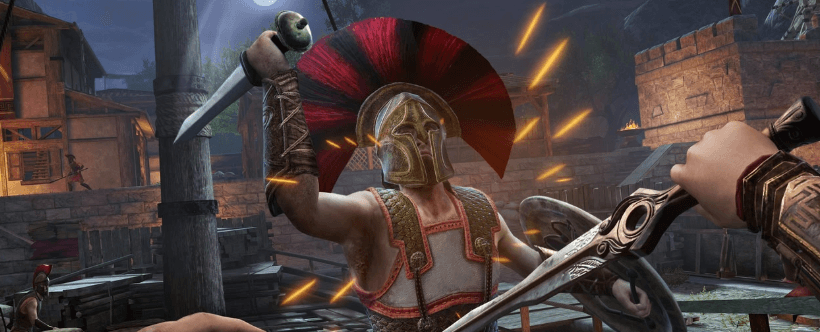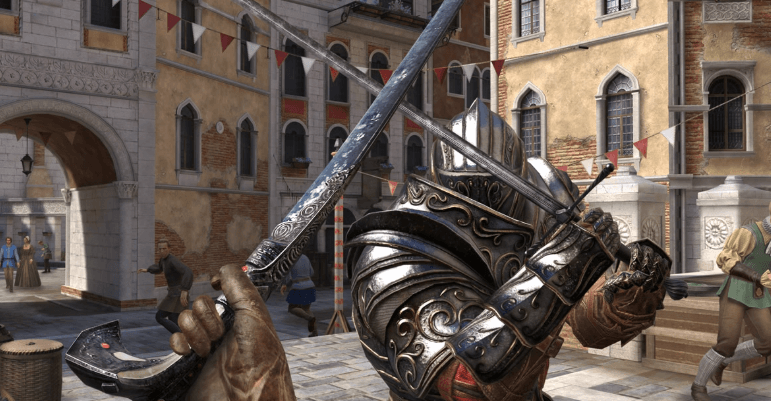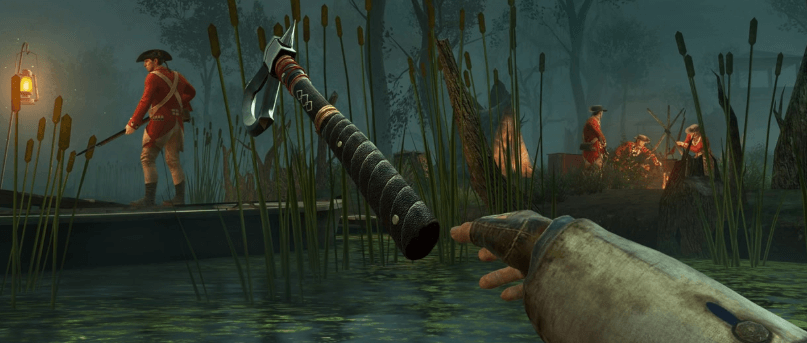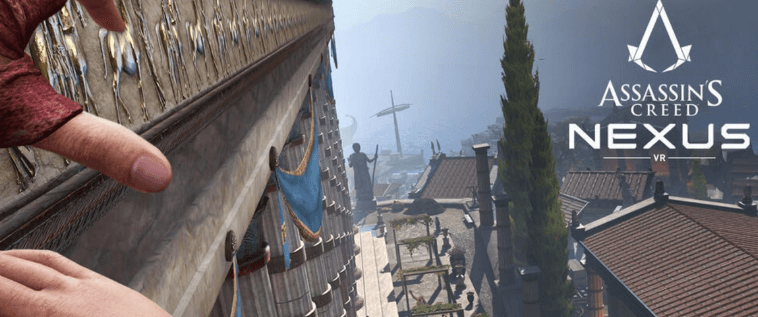For 18 years, the Assassin’s Creed franchise has let players relive history through ancestral memories—but Nexus VR shatters that fourth wall. This isn’t just a game; it’s a full-body plunge into the Brotherhood’s shadow wars. Imagine physically leaning over a Venetian rooftop, feeling your pulse spike as guards patrol below, or gripping a hidden blade with your own hand. VR transforms the series’ stealth-action DNA from a spectator sport into visceral survival.
Stepping Into the Animus Like Never Before
Set against feudal Japan’s war-torn landscapes—a setting teased in Shadows’ record-breaking 2025 sales—Nexus VR demands more than button mashing. Combat here mirrors Shadows’ slasher-movie intensity (Polygon called it “you’re the killer”), but with a twist: Your real-world reflexes dictate success. Block a katana strike too slowly? You’ll lose an arm—or worse, your target. Stealth isn’t a toggle; it’s about holding your breath, minimizing head movements, and exploiting environmental shadows.

Yet mastery isn’t just physical. Like Shadows’ weapon-tier system (Kotaku’s “legendary weapons” guide), Nexus VR rewards strategic gear choices. A smoke bomb tossed with a flick of the wrist creates escape routes, while a well-placed grappling hook—aimed by your own eyes—unlocks verticality. And with Eurogamer hinting at future “harder difficulty modes,” complacency isn’t an option. Will you adapt—or desynchronize?
Tactical Dominance in a Blade’s Edge
Nexus VR weaponizes physics in ways flat-screen games can’t replicate. Combat isn’t just swinging—it’s anatomy. Strike angles matter: A downward slash to a samurai’s collarbone (15° off-center) disarms faster than wild hacks. Parrying requires wrist rotation, not timed button presses—fail, and enemy katanas slice through virtual forearms with a 0.2-second stagger penalty. Kotaku’s Shadows weapon-tier system echoes here: A legendary tanto stolen from a daimyō’s vault deals 40% more bleed damage but demands precise thrusts (miss by 5cm, and it glances off armor).
Stealth transcends crouch-walking. Guards track sound via headset microphones—whisper a distraction, and they’ll investigate. Hold your breath too audibly (detected via Meta Quest Pro’s breath sensors), and archers pinpoint your rooftop perch. Environmental manipulation is key: Pry open shōji screens silently by gripping edges with both controllers, or drown patrol chatter by hurling a rock into a nearby stream. One misstep? Polygon’s “slasher movie” analogy becomes reality: Enemies swarm in 8-second kill cycles if alarms trigger.

Gear isn’t just stat sticks—it’s tactile. Reloading a repeating crossbow involves slotting bolts into a magazine (skip a step, and it jams mid-fight). Smoke bombs require pulling the pin with your teeth (a quick head-tilt gesture), forcing players to plan exits before detonation. Eurogamer’s rumored “harder difficulty modes” could amplify this: Imagine poisoned blades needing real-time antidote injections via syringe mini-games.
Economy systems from Shadows’ feudal Japan adapt brutally. Stealing a merchant’s purse in VR isn’t a button prompt—it’s slipping your virtual hand into their robe while maintaining eye contact. Get caught, and the entire district’s suspicion meter spikes by 70% for 15 minutes. Kotaku’s “get rich quick” tips apply, but with stakes: Bribe informants by physically dropping coin pouches into their palms, or lose funds if your throw misses.
Movement is punishment. Parkour isn’t automated—grip strength dictates climb speed. Fatigue sets in: Hold a ledge too long (over 12 seconds), and your avatar’s arms tremble, increasing fall risk. Verticality isn’t optional. Use Shadows’ “legendary grappling hook” (per Kotaku) by aiming at beams with your dominant eye—misalign by 10°, and you’ll swing into guard sightlines. Mastery means calculating wind direction (visible via swaying trees) before leaping between ships in a storm.
Exploit Shadows’ level-scaling quirks. In VR, enemies adapt faster: After three stealth kills, captains don heavier helmets (blocking 50% of headshot damage). Counter this by luring them into bamboo forests—their armor snags on foliage, slowing pursuit. Eurogamer’s hinted “nightmare mode” might remove UI cues entirely, relying on moonlight angles to gauge stealth efficiency. Ready your blade—complacency desynchronizes.
Forging Your Legacy Beyond the Animus
Nexus VR doesn’t end when the headset comes off. Mastery here reshapes how you approach stealth-action games entirely. Unlike Shadows’ level-scaling exploits (Kotaku’s “cheat the system” guides), VR demands physical finesse—train your reflexes with 10-minute parry drills daily, or risk desynchronization in future updates. Eurogamer’s rumored “nightmare mode” could strip UI entirely, forcing reliance on wind direction and moonlight—skills best honed now.

Think beyond gear stats. A legendary tanto’s 40% bleed boost (via Kotaku) means nothing if your thrusts lack precision. Treat weapons as extensions of your body: Practice wrist angles in low-stakes encounters before tackling high-value targets. Stealth isn’t a mechanic—it’s physiology. Control breath, mute footsteps by rolling heel-to-toe, and exploit guard patrol AI’s 8-second memory loops. Fail? Reset faster. Polygon’s “slasher movie” ethos rewards aggression, but survival favors patience.
Prepare for Ubisoft’s next move. With Shadows dominating 2025 sales (per GameSpot), expect Nexus updates to mirror its weapon-tier systems and evolving enemy AI. Future content may require poison antidote injections mid-combat or timed lockpicking under torchlight. Your Brotherhood legacy hinges on adaptability—start today. The Animus isn’t just a portal to history. It’s a mirror. What will it reflect?

